15.06.2021
A new bright nova discovered in Hercules at 8th magnitude briefly rose to naked-eye visibility. It’s currently easily visible in a pair of binoculars.
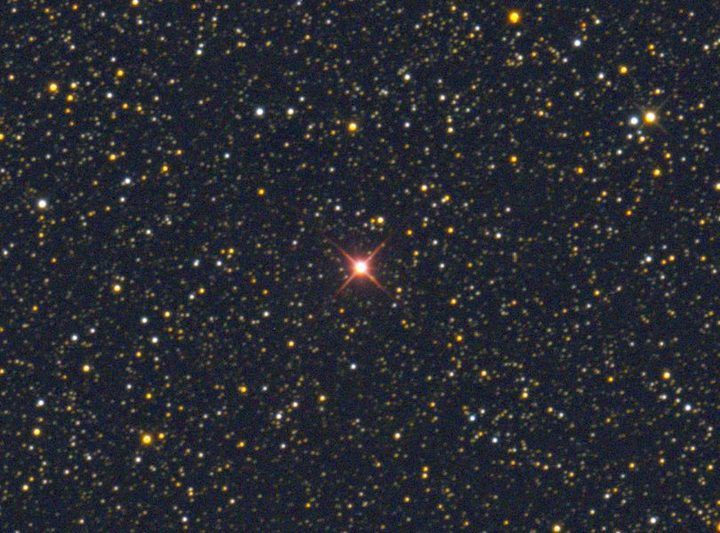
A new bright nova in Hercules glows red from hydrogen-alpha emission during its early explosive phase Sunday night, June 13. The color was also obvious visually.
Michael Jaeger
Losing sleep is a good sign that a lot is happening in the night sky. Many of us no sooner caught up on rest after the sunrise annular eclipse when Seiji Ueda of Japan discovered a bright, suspected nova in Hercules two nights later. He captured it at magnitude 8.4 with a Canon EOS 6D camera and 200mm lens, then confirmed his find with a small telescope on June 12.548 UT. Images taken two nights earlier showed nothing brighter than magnitude 13.0 at the object's location.
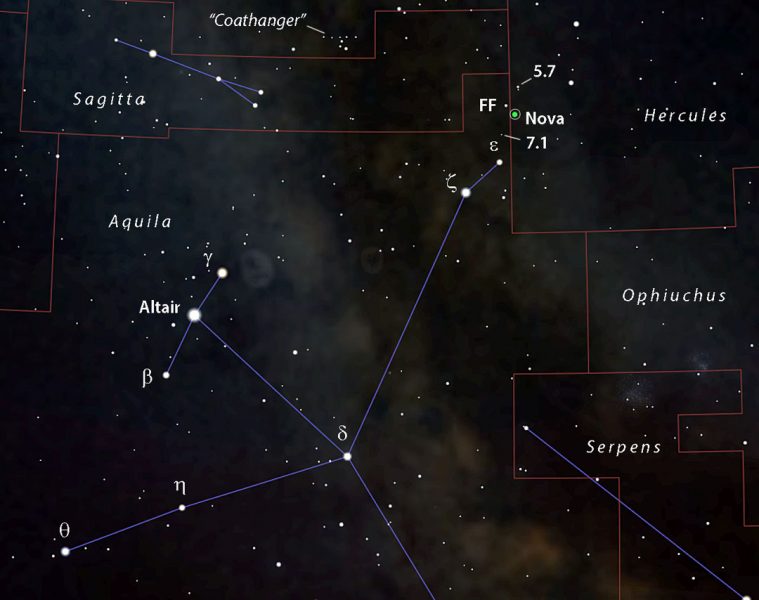
Stellarium with additions by the author
Andrew Pearce of Western Australia visually confirmed the suspected nova at magnitude 6.4 a little more than two hours later on June 12.642 UT. Soon after, several observers with the American Association of Variable Star Observers (AAVSO) reported the star as bright as 6.0, the traditional naked-eye magnitude limit. Things were really starting to get exciting. Around the same time, spectroscopic observations from a team of astronomers in Italy confirmed that the object was indeed a nova, reporting their results in the Astronomer's Telegram.
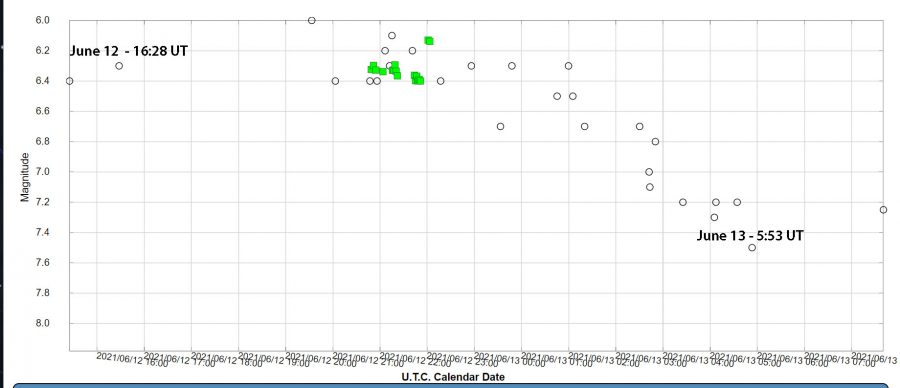
Courtesy of the AAVSO
When the Sun set Saturday night (June 12th), I couldn't wait for twilight to deepen to get my first look, hoping to see the nova brighter yet. Maybe even naked-eye bright, pretty please? But after locating the field with my 8x40 binoculars I was surprised to see it had faded to magnitude 7.0. That's still bright, of course, but not what I had expected — exactly why we love novae in the first place. They're all about ups and downs, twists and turns. Roller-coaster stars. To further prove its point, the nova dropped to 8.5 on June 14.2o UT while glowing rose-red from hydrogen gas emission.
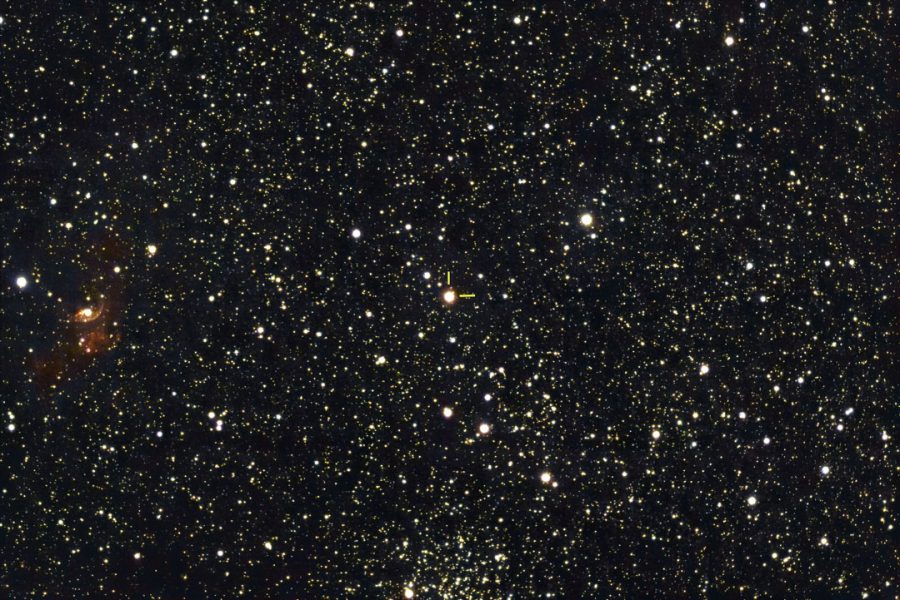
Eliot Herman
A good example of this behavior is the recent nova in Cassiopeia (V1405 Cas), which rose, slowly faded and then briefly shot up to naked-eye visibility before fading a second time, only to rise again to its current magnitude of 7. All this in just 90 days!
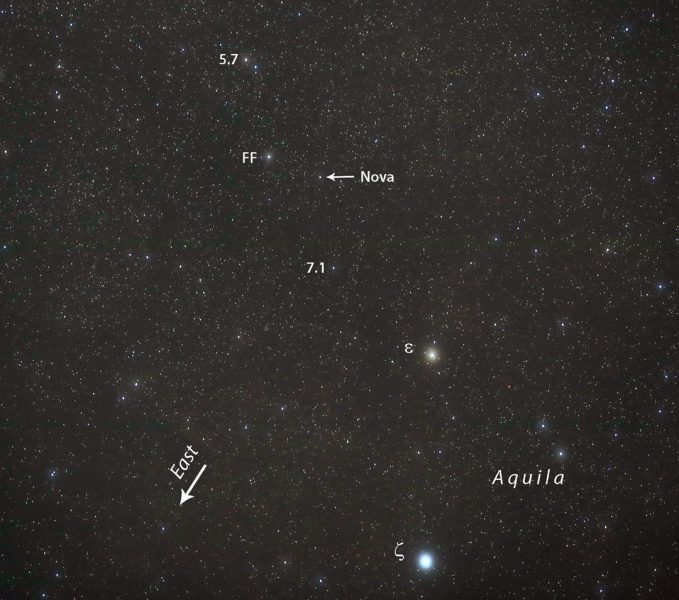
Bob King
To track the behavior of the Hercules nova, charts with comparison stars are available to anyone at the AAVSO website. Scroll down to the Pick a Star box, type in the star's name (TCP J18573095+1653396 for Nova Herculis), then choose from the options. Here's a chart to get you started. Note that comparison star magnitudes omit the decimal. If you study the star over the weeks and months ahead you can plot each observation to create your own light curve.
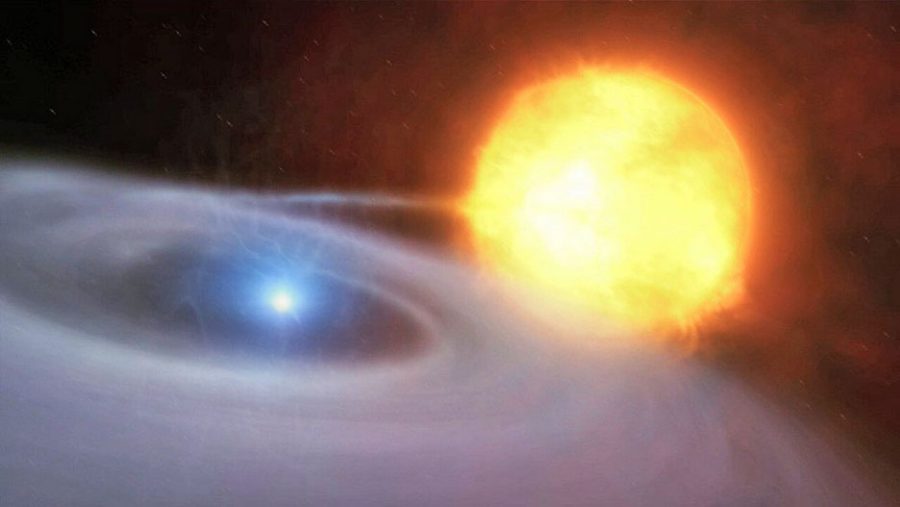
ESO / M. Kornmesser
Novae occur in close binary systems where a small but incredibly dense white dwarf and a Sun-like or red giant star orbit about their mutual center of gravity. Gas stripped from the normal star spirals down to the surface of the dwarf like water down a bathtub drain. Heated and compacted by the dwarf's gravity, the gas (primarily hydrogen) fuses and releases energy in an enormous explosion, much like a thermonuclear bomb. The blast brightens the star system by a factor of 50,000 to 100,000 as the material shoots into space at speeds of several million miles per hour.
About 30 to 60 novae are thought to occur each year in the Milky Way Galaxy, though only about 10 are discovered during that time because interstellar dust obscures the majority from view. A nova explosion rarely destroys the host white dwarf but instead expels its atmosphere into space at tremendous speeds. Spectroscopic data shows that material from the new nova is hurtling outward in an ever-expanding shell at several thousand kilometers per second.
I can tell you this: I'll be out again tonight as soon as it gets dark to see what else Nova Herculis has in store. I hope you'll have that opportunity, too!
Quelle: Sky&Telescope
